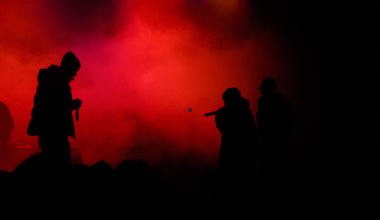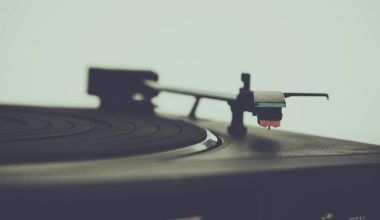Have you ever wondered how singers sound so clear and powerful in songs? Or why a podcast host’s voice feels so rich and smooth? It’s not magic; it’s the microphone! A microphone, often called “mike” or “mic,” is an essential tool for recording and performing. Whether you’re a singer, podcaster, or performer, the Music Mike Price plays a big role in deciding the quality of your sound.
This blog is here to simplify everything about Music Mike Price. Whether you’re starting as an artist or looking to upgrade your equipment, you’ll find all the answers you need. Let’s dive in and explore the world of microphones, their prices, and how to pick the best one for your needs.
Chapter 1: Types of Microphones – Which One is Right for You?
Before we talk about the price, it’s important to know the different types of microphones. Each type has a specific purpose, and knowing this will help you understand what you’re paying for.
1.1 Dynamic Microphones – Tough and Reliable
Dynamic microphones are like your dependable friends. They’re sturdy, affordable, and great for live performances. They don’t need extra power and can handle loud sounds easily.
- Examples: Shure SM58, Audio-Technica ATR2100x
- Price Range: ₹5,000 – ₹20,000
- Best For: Singing live, speaking at events, or recording loud instruments like drums.
1.2 Condenser Microphones – Clear and Sensitive
Condenser microphones are perfect for studios. They pick up even the tiniest details in your voice or music. These microphones need an external power source, so they’re more delicate and expensive.
- Examples: Rode NT1, Audio-Technica AT2020
- Price Range: ₹10,000 – ₹1,00,000
- Best For: Recording vocals, acoustic instruments, or podcasts.
1.3 Ribbon Microphones – Classic and Vintage
Ribbon microphones are a bit old-school but amazing for capturing warm, natural sounds. They’re mostly used in professional studios and require careful handling.
- Examples: Royer R-121, AEA R84
- Price Range: ₹50,000 – ₹2,00,000
- Best For: Recording vintage-style vocals or instruments like violins and guitars.
Chapter 2: How Much Does a Music Mike Cost?
Now that you know about the types of microphones, let’s talk about the Music Mike Price. Prices vary based on the type, features, and brand.
2.1 Budget Microphones (₹2,000 – ₹10,000)
If you’re just starting, these microphones are great. They offer decent quality at an affordable price.
- Examples: Behringer XM8500, Samson Q2U
- Best For: Beginners, small performances, or casual recording.
2.2 Mid-Range Microphones (₹10,000 – ₹50,000)
These are for people who are serious about their music or content. They provide excellent sound quality and additional features.
- Examples: Blue Yeti Pro, Audio-Technica AT4040
- Best For: Semi-professional recordings, podcasts, or studio work.
2.3 High-End Microphones (₹50,000+)
These microphones are the best of the best. They are used in professional studios and by top artists.
- Examples: Neumann U87, Shure KSM32
- Best For: Professional recordings, live concerts, and high-end projects.
Chapter 3: Why Are Microphones Priced Differently?
The Music Mike Price depends on several factors. Here are the most important ones:
3.1 Build Quality
A well-built microphone lasts longer and performs better. Durable materials and sturdy construction can increase the price.
3.2 Brand
Big brands like Shure, Rode, and Neumann charge more because they’re trusted for quality and performance.
3.3 Features
Some microphones come with extra features like multiple polar patterns (how they pick up sound) or wireless options. More features mean a higher price.
3.4 Purpose
A microphone designed for specific tasks, like recording vocals or amplifying instruments, might cost more.
Chapter 4: Tips for Choosing the Right Microphone
Buying a microphone doesn’t have to be confusing. Follow these simple tips to find the perfect one:
4.1 Know Your Needs
Do you need a microphone for singing, podcasting, or recording instruments? Knowing this will narrow down your choices.
4.2 Set a Budget
Decide how much you’re willing to spend. This helps you focus only on microphones within your range.
4.3 Read Reviews
Online reviews and recommendations can give you a good idea of a microphone’s quality and performance.
4.4 Try Before You Buy
If possible, test the microphone. Some stores allow you to try them out before buying.
4.5 Look for Accessories
Don’t forget to buy accessories like mic stands, pop filters, and cables. These improve your recording setup.
Chapter 5: Where to Buy Microphones at the Best Price?
When it comes to buying a microphone, you have several options:
5.1 Online Stores
Websites like Amazon and Flipkart often offer great deals and discounts.
5.2 Local Music Shops
Visiting a store lets you test the microphone before buying. You can also get advice from the staff.
5.3 Second-Hand Options
If you’re on a tight budget, buying a used microphone can save you money. Just make sure it’s in good condition.
5.4 Directly from Brands
Buying directly from the manufacturer’s website ensures you’re getting a genuine product with warranty.
Chapter 6: How to Take Care of Your Microphone
A microphone is an investment, so it’s important to take care of it:
- Clean Regularly: Wipe your microphone with a soft, dry cloth to remove dust.
- Store Safely: Keep your mic in a protective case when not in use.
- Avoid Moisture: Moisture can damage the sensitive parts of a microphone, so keep it dry.
- Check Connections: Inspect the cables and connectors for wear and tear.
Chapter 7: FAQs About Music Mike Price
7.1 Why are some microphones so expensive?
High-quality materials, advanced technology, and brand reputation make some microphones more expensive.
7.2 Can I get a good microphone for under ₹10,000?
Yes, many affordable microphones offer great quality for beginners and casual users.
7.3 How long does a microphone last?
With proper care, a good microphone can last for years, even decades.
Chapter 8: The Future of Microphones
The world of microphones is constantly evolving. New technologies like AI and smart microphones are making recording easier and more accessible. These advancements may affect the Music Mike Price, but they also open up new possibilities for artists and creators.
Conclusion: Why Understanding Music Mike Price Matters
Choosing the right microphone is essential for making your music or content sound its best. Whether you’re a beginner or a professional, understanding the Music Mike Price helps you make smarter choices. Remember, it’s not just about the cost; it’s about finding a microphone that meets your needs and helps you create magic.
Related Articles:
For further reading, explore these related articles:
- How to Become a Successful Music Artist in India in 2024?
- Promo Cards on Spotify: A Game Changer for Artists
- Understanding ISRC Codes and Their Importance in Tracking and Distributing Your Music
For additional resources on music marketing and distribution, visit Deliver My Tune.






